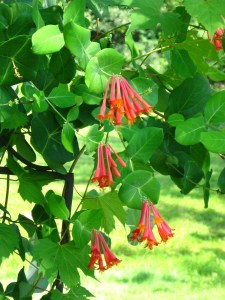 As the month of February keeps moving along, I have decided to “Go Native”, Native Plants that is. It is Wildflower Wednesday at Clay and Limestone the fourth Wednesday of every month where Gail Eichelberger hosts posts about our native wildflowers. In a few days, it will also be Fertilizer Friday and time for another post for “How to Find Great Plants” at Appalachian Feet. Please take time to visit these three wonderful blogs to see more flowers and plants. You won’t be disappointed.
As the month of February keeps moving along, I have decided to “Go Native”, Native Plants that is. It is Wildflower Wednesday at Clay and Limestone the fourth Wednesday of every month where Gail Eichelberger hosts posts about our native wildflowers. In a few days, it will also be Fertilizer Friday and time for another post for “How to Find Great Plants” at Appalachian Feet. Please take time to visit these three wonderful blogs to see more flowers and plants. You won’t be disappointed.
I love Native Plants in the garden and so many bloom in early spring for you to enjoy their incredible flowers and foliage. Using plants native in the garden is not new, but it certainly is catching on and catching steam, and I for one am excited!! Natives are unusual, wonderful for naturalizing and surviving the conditions Mother Nature dishes out through the seasons for your area, and wildlife just love them.
So consider adding some native plants to your landscape this year. There are many websites for you to consult so you can find plants for your area. One of the best is NPIN: Native Plant Database put together by the Lady Bird Johnson Wildflower Center at The University of Texas at Austin.
Look to local nurseries to help supply you with natives especially suited for your area of the country. Natives are divided into the following categories and I try to add more into my garden yearly from each category: ferns, grasses, wildflowers, vines, shrubs, trees. The main source I use for my area comes from a great book, Native Plants of the Northeast: A Guide for Gardening and Conservation by Donald Leopold who is a professor at the State University of New York College of Environmental Science and Forestry in Syracuse, New York which is just down the road from me. I met Don when he came to speak at a Native Plant Symposium we were hosting at our school. He also assisted staff with designing and securing plants for a Native Garden at the school.
Native Plants of the Northeast: A Guide for Gardening and Conservation by Donald Leopold who is a professor at the State University of New York College of Environmental Science and Forestry in Syracuse, New York which is just down the road from me. I met Don when he came to speak at a Native Plant Symposium we were hosting at our school. He also assisted staff with designing and securing plants for a Native Garden at the school.
The following is a short list of natives you would find in spring for my zone 5 Central New York area. You may find some of these same plants are native to your area as well. I will continue to document the natives in my garden this year and post what blooms throughout the seasons.
While forsythia is thought of as a native plant, it is not. It has become a harbinger of spring and I love to see those yellow blooms as they welcome spring, but fothergilla (pictured above) is a beautiful native shrub that gardeners should try.
Honeysuckle is an easy growing forgiving vine that rewards you with blooms from spring through fall, and beautiful berries for winter interest; hummingbirds love this plant and it has an intoxicating scent.
Scouring rush (the green stems) are in the category of native ferns. These grow along my pond and will definitely move where they want. The flowers are from a non-native (to my area) hummingbird mint.
This pink trillium turns white as it matures. I have yellow and white varieties as well. Many of my more unusual native plants are in a special bed until they mature. Then they can be moved to other areas of the garden.
This amsonia is the native variety called Common Bluestar. It’s relative, Arkansas Bluestar, is the 2011 Perennial Plant of the Year.
Trout Lily is a stunning plant that grows in a naturalized colony in my meadow and a few other spots. The spotted leaves put on a beautiful show before you are rewarded with the delicate yellow flowers.
This Softrush Juncus is especially suited in the wet areas and stays evergreen all year. Even looks great sticking up through the snow.
Gardeners are key land managers. Our choices therefore lie not
in whether but in how we manage the land. We would all agree that
we must do it in an ecologically responsible way.
– George Seddon, Gardening Responsibility







